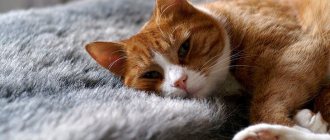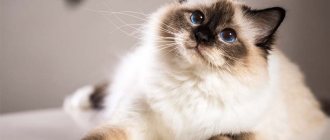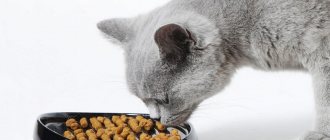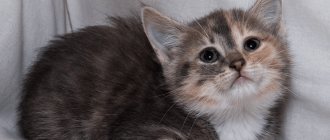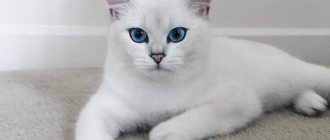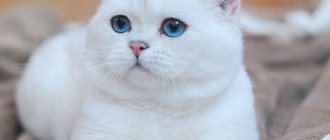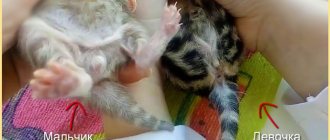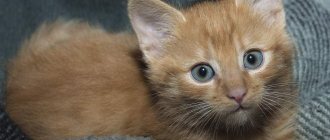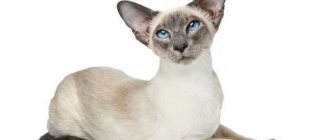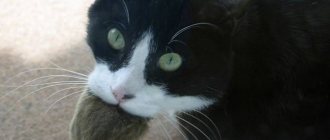Due to their character traits, Persian cats can be classified as homebodies who love to communicate with their owners. The animal is extremely affectionate and completely trusts the family members where it lives. At the same time, the pet is absolutely not annoying, does not raise its voice without special reasons, but simply waits for attention to be paid to it. Although they are often classified as animals that constantly spend time on the sofa, the furry beauties love to play and catch insects that fly into the apartment.
Red Persian cats: characteristics and care features
Persian cats, or Persians as they are often called, are representatives of one of the oldest and most popular breeds of long-haired cats.
It is not possible to find out their exact origin in our time. Many researchers of this issue believe that the ancestors of these cats actually lived in the territory of ancient Persia. Persian cats are also called Iranian - from the modern name of this country . These animals were brought to Russia in the late 80s from European countries by diplomats, where they gained the status of a very rare and expensive breed.
History of the breed
There are two versions of where and when the Persians appeared. According to one, Persian cats first appeared in Italy probably in the 17th century. One Italian merchant was making a long sea voyage and while in Persia he saw a uniquely beautiful cat that made him fall in love with her. The navigator brought the beauty to Italy for breeding, but what happened to her next is unknown.
After some time, Persians appeared in Paris, and after a while this breed spread throughout France. The Persians were liked by many aristocrats.
Soon, Cardinal Reshelier himself learned about the amazing cats, and he was quick to buy a Persian kitten for himself. He was one of the first to breed Persians in France. Also, this breed came to the court of the French king.
Then the Persians began to appear throughout Europe. In England, for the first time, they began to research the breed and breed Persian cats, developing new species and colors.
History of selection
According to felinologists, Persian cats descended from the wild manul cat and Asian desert representatives of the cat family.
At first, Persians had only black and blue coats, but as a result of selection, about a hundred different colors appeared: white, gray, red, lilac, color-point and many others.
In the 1970s, America was the country with the largest number of nurseries, but this had a negative impact on the formation of the breed - many animals with selection defects were exported to European countries. Only about 20 years ago, European breeders bred a healthy Persian cat and developed appropriate standards for this breed.
Initial mentions of the Persian breed and its further history
They say that the first time Persian cats were mentioned was in travel accounts dating back to 1620: they said that a couple of unusually wooly cats were transported from the Iranian province of Khorasan straight to Italy. The “culprit” for the appearance of the Persians in Europe was the Italian Pietro Della Valle . Outwardly, these fluffy creations of nature were very different from traditional catfei, so they immediately aroused considerable interest in aristocratic circles.
According to another version, one of the discoverers of the breed in Europe was the French astronomer Nicolas-Claude Fabry de Pieresque . It was he who brought the Persians to his homeland from Turkey and called them Angora cats, since in those years it was believed that the Persians were the result of crossing an Angora with an Iranian cat.
Today, the breed is still called Persian, largely due to the detailed study of descriptions of the way of life of Ancient Persia by the Dutchman Van de Werff . In the 19th century, breeders from Germany took on the appearance of fluffy cats, trying to improve the quality of Persian fur and make the body of these cats less squat. And already in the 20th century, American breeders took up the Persian cat: they “gave” the breed its famous “face” with deep and intelligent, but childishly naive eyes.
Researchers have repeatedly transferred the “palm” with regard to the emergence and origin of the Persian cat breed from state to state. For example, the Irish were convinced that the ancestors of modern Persians were animals from the steppes of Asia and Africa. In France and Germany, many believed that the Persian cat was the domestic embodiment of the wild manul. As for the British, for a long time they persistently called long-haired Persians “French”.
By the way, the length of the fur of Persian cats also has many different explanations, because in those days many asked themselves the question why the coat of cats brought from hot climates was so thick and warm. One of the most plausible versions is the arrival of Persian cats to eastern countries from Siberia. Indeed, there is an obvious similarity between Siberian and Persian cats - just take the tufts of hair between the fingers, which are present in both breeds. One way or another, these cute fluffies living in our homes today were brought to the standards of the modern Persian breed by English breeders.
pixabay.com/cromaconceptovisual
Breed standard
The World Cat Federation has prescribed the following standard of appearance for Persian cats.
- The squat, large or medium-sized body is supported by low, stable paws. The chest and shoulders should be broad and muscular.
- The thick coat, up to 12 centimeters long, is fine and silky. The neck, shoulders and chest have a collar-shaped coat of fur.
- The not very long fluffy tail is slightly rounded at the end.
- The head is round and massive, of good proportions, with a voluminous skull.
- The forehead should be prominent and the cheeks should be full.
- Persians have a short and wide, slightly snub nose with very open nostrils.
- Strongly built jaws and chin.
- The ears are small, set wide and low on the skull. They should be rounded at the ends, with beautifully growing tufts of hair.
- The eyes are large, very expressive, shiny, round and spaced far apart. Their color depends on the specific coat color (they can be blue, golden and even multi-colored).
- The coat can be either one color or consist of two or three shades.
- The weight of the animals varies from 3 to 7 kg.
Persian cats breed description
Distinctive characteristics of the breed, recognizable features.
- A small snub nose, the shape of which in the extreme American type of breed looks small and strongly turned up. The European classic Persian has the usual slightly upturned nose.
- Fluffy, soft and silky long coat, reaching up to 15 cm with a variety of colors.
A complete description of the breed is provided in the summary table.
Table No. 1 Description of the Persian cat breed:
| Breed: Persian cat, origin: Iran (Persia), year of first registration: 1887 in Europe | ||
| External data | Description | Note |
| Body, body, chest. | The build is medium to large, stocky with a muscular, fairly broad chest. | Straight short bone looks squat but compact |
| Paws, limbs. | The legs are short, but muscular and powerful. The panties are clearly marked on the hind legs. A tuft of fur grows between the toes of the rounded paws. | Long hair hides the already short length of the limbs. |
| Tail. | Proportional length in comparison with the body, does not appear short due to long hair. | A sharp tail tip with knots along its length is considered a defect. considered to be a knobby tail |
| Head, muzzle, neck | On a thick, short neck, a large head with a wide forehead merges with the body. The muzzle has a round shape, on which a strong chin is clearly marked. | The neck is surrounded by a collar with a longer neck. A luxurious collar is a must. |
| Eyes, iris color. | Widely spaced, large, round eyes have a color that matches a specific coat. | For chinchillas – green; for white, especially valuable ones - blue or multi-colored, one is light blue, and the second is orange. For all other colors, copper or orange tones are acceptable. |
| Ears | Set low above the forehead, the small, rounded ears are set wide apart. | There are tufts of fur inside the ears. |
| Wool | The long, up to 15 cm, thick coat is soft and silky to the touch. The thick undercoat lies close to the body. | Persian kittens can be solid, point or tabby in color. |
| Average height at withers in males and female cats | 28-30 cm | Due to long hair, the average height visually decreases, and weight, on the contrary, increases. |
| Average weight of Persians | from 3.5 to 7 kg | |
| Average life expectancy | Can range from 12 to 14 years, | With good care and health, the breed can live for up to 20 years. |
Persian cats and cats photos
Longhair
The body of the Persian cat of the classic and extreme type is covered with soft, silky hairs that hide a thick undercoat. The length of the fur in different parts of the body is distributed unevenly throughout the cat’s body and can range from 10-20 cm. A fluffy collar around the neck with a length of up to 20 cm. The panties on the hind legs and the tail have more enlarged hair.
Shorthair
The exotic shorthair cat is a half-Persian cat that is the result of the mating of an American shorthair cat and a Persian cat. As a result of selection, a new type of Persian was developed with a muzzle similar to a Pekingese, rounded, decorated with small ears and with a body covered with short hair.
Types of Persian cats and their colors
Breeders from many countries have achieved that the Persian cat can have varieties with any coat color. The main classic types of Persian cat colors are still the most popular, these include:
- Solid, solid colors: white, blue, red, black, in which the coat is evenly colored without inclusions or spots of a different color.
- Bicolor colors, similar to the Siamese.
- The tortoiseshell color is characteristic mainly of females.
Black
The black Persian cat is covered with fine and silky fur without bleached spots or white speckles, especially long on the shoulders and around the neck. The American exclusive type Black Persian has the same charcoal paw pads, while the classic European type may have black or brown paw pads.
Blue
The longhaired Blue Persian is a very popular color all over the world. The fine, silky hair is evenly distributed over the dense undercoat, except for a longer collar on the neck. With a blue tint to the eyelids, a short flattened nose and gray-blue paw pads. Round, large eyes, orange or copper-tinged. Kittens are born with the presence of a tabby pattern, which gradually levels out to a blue color.
Tortoiseshell
A Persian tortoiseshell cat whose coat spots are evenly distributed over the body, and a red or cream tint is preferred on the face. There are several combinations of spots in color.
In the exclusive type of Persian, white predominates, especially on the belly, while in the classic type, white color and other tortoiseshell spots are evenly distributed.
Tortoiseshell males are born rarely and sterile.
White
The white Persian was the result of crossing with a white Angora cat, a very valuable color. A white cat with blue or multi-colored eyes is a beautiful animal, but often has a genetic disease; they have difficulty hearing or become completely deaf.
The fur should be pure white, silky evenly distributed over the body, and the snub nose should be pink, as should the paw pads.
Ginger
Persians with very long, silky hair of a thick red, pure red color are quite rare. They usually have brick-red colored paw pads, eye rims and nose. The eyes are round, large, orange or copper in color. The red tail is very fluffy.
Grey
The gray color of the Persian is solid solid with evenly colored hair from root to tip with the absence of white hairs and other marks. The color of the paw pads and nose mirror looks like the main color of the coat, and the large eyes are copper and less often green.
Color point
Color-point Persians have a cream or ivory-colored coat with non-blurred, clear spots, like Siamese. Large, round eyes of a dark blue color, almost blue.
Red Persians
These cats have bright sunny red fur and often have beautiful honey-colored eyes.
By nature, red Persian cats are soft, affectionate, attached to the owner, whom they choose among all family members themselves.
But the calm disposition of these animals does not mean that they are not capable of strong emotions. Persians get very upset when they are left alone for a long time, without their owner, or if he pays little attention to them. These representatives of the cat family are very smart, quick-witted, and easy to train.
Types of Persians
Today, there are four main types (varieties) of Persians accepted for breeding:
- British type or classic old type. With it, the cat's nose is wide and short, the edge of the earlobe is no more than 6 mm below the line of the lower eyelid. Classic type - Classic.
- The short-nose open type has become the most popular. The edge of the lobe is in line with the lower eyelids of the eyes. S hort open type – Open.
- The extreme type “speaks” for itself - the lobe is flush with the line passing through the inner corners of the huge, wide-set eyes. Extreme type - Extreme.
- The type of extreme extremity is piggy. The lobe is raised to the upper eyelid and even higher, the bridge of the nose is “failed”, the bones are weakened, the weight is small. Pig (piggy) type - Piggy.
The last two types are disputed by many felinological associations as bringing suffering to this meek, patient beauty. In particular, in Australia, New Zealand, Italy, Austria and Canada, such animals are not allowed into show rings.
How to care?
If you become the owner of an adult Persian cat, then the following recommendations from experienced breeders will help you maintain his health and charming appearance.
- Hair and eye care. It is not difficult to guess that the main care is related to maintaining the healthy condition of the coat of Persian red cats. It needs to be thoroughly combed every day with special brushes and ensure that it does not fall off. Persians need to be bathed more often than cats of other breeds: approximately once every 2 weeks. The weak point of all cats of this breed is also the eyes.
To care for them and to prevent serious diseases, you should purchase a product from a pet store that needs to be used to wash your cat's eyes every morning.
- Correct diet. Adult Persian cats can be fed 3 times a day with both special super-premium food and natural food. The latter must necessarily include proteins (meat), offal, sea fish, cereals, cereals, and stewed vegetables. You can add a few drops of refined sunflower oil to your food; it improves digestion and the condition of the coat. It is forbidden to give cats sausage, spices, bones, pasta, and potatoes. Fish should be offered no more than twice a month, steamed and be sure to remove all bones.
- Typical diseases. Persian cats are prone to diseases such as cardiomyopathy, kidney disease, retinal atrophy, gingivitis, and they may have breathing problems. In addition, due to the ingestion of long hair during the licking process, hairballs form in their stomachs, to remove which special pastes or tablets are used. You should have regular checkups with your veterinarian and get all necessary vaccinations.
Diseases
Typically, Persian cats rarely get sick. With proper care and if everything is in order with heredity, then these are surprisingly active and playful animals. Persians, however, have several genetic diseases.
These include polycystic kidney disease, retinal atrophy, leading to the animal’s blindness; it can be diagnosed in a kitten as early as the second month. There may also be a problem with teeth; Persian cats should definitely be shown not only to a veterinarian, but also to a dentist.
Also, in some cases, problems with the heart and blood vessels are possible. Because of this, Persians do not tolerate travel and travel well.
You can buy a Persian kitten in almost any city where there are nurseries. Since these cats are very common, there are many breeders of them.
Different prices. They depend on the color and pedigree of the animal. On average, the price ranges from two to twenty-five thousand rubles.
Home keeping kittens
Persian red kittens are very attractive and look like fluffy bear cubs with huge eyes. Purchase in advance everything you need for this cute baby: food bowls, a scratching post, brushes for combing wool, bathing products, a tray, a bed, toys. Kittens of this breed are very inquisitive, affectionate and trusting; they follow their owner everywhere. Persian babies are clean and quickly get used to the litter box.
Up to 6 months, kittens should be given warm milk mixed with cottage cheese, a boiled egg, boiled chicken meat, a little raw beef, milk porridge (but not often). Dry food is introduced no earlier than the kitten is 3 months old.
Red Persian cats are charming, sociable and completely non-aggressive creatures. They easily get along with any family member and are friendly towards other pets. It is also believed that red Persians attract financial well-being to the home.
For general information about the Persian cat breed, see below.
Care and maintenance
Keeping such pets is not easy; you need not only constant care for the Persian cat, but also close attention, which consists of the following:
- Persians have extremely long, thick coats that are not easy to maintain. The fur coat needs to be combed daily, which is not very easy. Tangled hair quickly forms tangles that are difficult to break, and you have to cut off part of the fur, which spoils the pet’s appearance.
- A kitten accustomed from childhood will continue to love grooming, with careful combing.
Important! It is recommended to use several combs for combing. With fine, frequent teeth for the undercoat, with sparse teeth for general grooming. A fumigator will be useful.
- Claws are trimmed as they grow, but pets must be accustomed to the scratching post.
- Persians are neat animals, they spend hours licking their fur and regularly use a clean tray with fresh filling.
Important! To ensure that lumps of licked fur come out of the stomach, pets are constantly given a special paste.
- Persians are often bathed and not only before a show. The procedure is complicated; animals do not like to wash themselves and are afraid of water.
- A lazy animal loves comfort; a soft, cozy place is organized in a secluded corner.
- Walking outside frightens Persians; they do not like unusual street environments.
Nutrition
Veterinarians and felinologists advise not to transfer Persian cats prone to overeating and obesity to homemade natural food. Super-premium or holistic industrial food specialized for Persian cats is balanced in nutrients and contains the necessary amount of vitamins and minerals for the animal, which will ensure the normal growth and development of the pet.
Additionally, Persians are given special complexes in the form of tablets containing seaweed and calcium into their daily diet.
Important! Persians constantly need clean drinking water.
How long do Persian cats live at home?
In many ways, how long Persians live depends not only on diet, hygiene, and timely vaccination, but also on the physiological state of the female. Cats that give birth frequently lose their physical shape and develop diseases associated with pregnancy, which significantly reduces the life expectancy of Persian cats.
Sterilized females live at home 3-4 years longer than unsterilized ones and their age can reach up to 15-20 years. This is explained by the fact that the cat’s life becomes emotionally calmer due to the removal of the hormonal surge during estrus.
Important! Organize proper care for your cat after surgery. How many years Persian cats live after sterilization depends on compliance with all veterinarian recommendations for treating postoperative wounds and proper nutrition.
How long do Persian cats live at home?
It is recommended to castrate males, which affects how long Persian cats live after a simple spay operation.
In castrated cats, life expectancy will be extended by 3-4 years due to the reduction in the occurrence of hormonal diseases. After the operation, your pet will have no hormonal surges, he will calm down and will not commit life-threatening actions. Castrated Persians have every chance of living up to 15-20 years, and if they were not castrated, then up to 12-15.
Persian cat - features and photos of red and white kittens
Due to their character traits, Persian cats can be classified as homebodies who love to communicate with their owners. The animal is extremely affectionate and completely trusts the family members where it lives. At the same time, the pet is absolutely not annoying, does not raise its voice without special reasons, but simply waits for attention to be paid to it. Although they are often classified as animals that constantly spend time on the sofa, the furry beauties love to play and catch insects that fly into the apartment.
How to choose a kitten
They choose a Persian kitten in specialized nurseries, only there you can buy a guaranteed healthy, purebred pet. When purchasing, follow these tips:
- In many ways, what Persian kittens will look like can be determined by the appearance of the mother cat. By examining the appearance of the parent, you can verify her health and become familiar with the living conditions of the family.
- The breeder must train the babies to use the tray, wean them from mother's milk and transfer them to independent feeding.
- Only a stronger kitten is taken from the nursery when it is more than 3 months old.
- The nursery must provide a complete package of documents with registration metrics, with attached data on vaccination, medical examination and pedigree data of at least 3 generations.
Important! Carefully examine the kitten, its ears, eyes, anus, they should all be clean and free of discharge. Skin and fur without combing or bald patches. The baby's mouth should smell good.
Persian kittens photos
Tricolor
Tricolor
white
white
Bicolor
grey
How much is the breed worth?
How much a Persian cat costs depends on several conditions:
- The cheapest kittens are those bought second hand through an advertisement. Such kittens without documents and pedigree will cost approximately 2,000 rubles.
- Pet-class kittens with minor flaws from the standard cost about 7,000 rubles
- Breed-class kittens purchased for breeding will be much more expensive, starting from 15,000 rubles.
- Show-class kittens, as a show breed with an excellent pedigree, are expensive, starting from 30 thousand and above.
Nurseries
In Russia, Persian cats are popular throughout the country. Nurseries that breed exotic, classic, exotic animals of various colors exist in many cities. For example:
- Russia Moscow. "KELEVRA". Cattery, CFA registration, cats color: silver and golden chinchilla, contacts: 89639940370.
- Russia, Tver. "Ogava" Cattery, CFA and WCF registration. Exotic cats of merle, silver and bicolor colors. Contacts: 89639940370.
- Russia, Sochi. "DAIONE SIDHE". Cattery, CFA and WCF registration. Exotic cats. Contacts: 89639940370.
- Russia, Saint-Petersburg. "SILVERDOLL*RU". Cattery, CFA and WCF registration. Exotic cats. Contacts: 89639940370.
- Russia, Chelyabinsk. "Ural cloud". Cattery, CFA and WCF registration. Exotic cats. Contacts: 89058330350.
Interesting facts from the history of the animal
The cat came to Europe back in the 16th century thanks to the famous traveler Pietro della Valle , who bought the animal in the Persian province of Khorasan. At the same time, the cat was similar to its modern relatives only in its long coat. Due to the fact that the breed was considered exotic in those days, only wealthy merchants and other members of the nobility could buy it.
The lion's share of the work in the selection of modern representatives of Persian cats was done by America. Thanks to the efforts of American breeders, the cat's fur lengthened and its nose became flattened, which turned into a real problem for the animal's respiratory system.
The breed became a trend thanks to Queen Victoria, who kept more than a dozen Persian cats with a blue color. She even ordered the construction of a special castle for pets. So, the Persian cat, as in the photo, turned into the most desired animal among the aristocracy of Europe.
Colors
In nature, there are many colors of Persian cats. They come in both single color and multicolor.
Let's look at the most common ones:
- White peaches are amazing in their beauty; such peaches require special care.
- Grays are the most common, they come in both gray-pebble color and smoky, gray-blue.
- Black - despite the fact that they are not often found, they are not in particular demand.
- Redheads are very pretty, affectionate sissies.
- Blue ones are unusually beautiful, somehow majestic. Queen Victoria of England herself had a blue Persian cat.
- Cream - born from Persian cats with a weakened gene responsible for the color of the future generation. At the same time, these kittens are very cute.
- Purple peaches are very rare animals, they can rarely be found even in nurseries; to see them with your own eyes, you need to go to an exhibition.
- Red - or orange-red, one of the most ancient types of Persian cats.
- Two-color - there are a lot of options and combinations.
- Tabbies are tortoiseshell or brindle, with a specific pattern all over their body.
- Chinchillas are extraordinary animals, but they are not very easy to buy, nor are they cheap.
Features of the Persian cat breed
The Persian cat can easily be considered one of the most beautiful and popular breeds in the whole world. Most Persians are sweet, magical creatures that turn into true friends and family favorites. Moreover, this happens not because of the external attractiveness of the furry pet, but due to the unique character traits that make a person fall in love with him at first sight.
The Persian cat breed is characterized by a miniature, wide and slightly snub nose. The breed also has short but powerful legs. The Persian cat breed standard implies that the animal has the following distinctive features:
- round and massive head, proportional to the structure of the body;
- short but wide neck;
- large or medium massive body;
- low, wide cheekbones and round, full cheeks;
- shortened snub nose;
- low-set miniature ears, rounded at the ends;
- round eyes always wide open;
- powerful shortened paws;
- thick but short tail slightly rounded at the end.
Due to the variety of cat colors, breeders subdivide the breed into more than a hundred subspecies . You can meet a black, gray, white, blue, cream, red, red and even purple cat. At the same time, a white cat may have dark orange, copper, green or blue eyes. But in most cases, the color of the coat corresponds to a certain shade of the eyes. If the animal has a single color coat, then no stripes or spots should be present. In general, the standards of Persian cats have a huge number of coat shades, which directly affect the cost of kittens.
Persian cat
For several centuries, the Persian cat breed has deservedly enjoyed popularity in many countries around the world. She has an original appearance and a friendly character. She immediately attracts attention with her fluffy appearance, unusual jaw structure, and upturned nose. And thanks to its luxurious coat with long fur, the Persian cat requires constant care and attention. Breeders from different countries have made efforts to select the breed.
Character traits inherent in the breed
According to the stories of owners of Persian pets, keeping a cat at home is a lot of fun. This is a playful representative of the cat family who loves his owner immensely. In addition, the breed has the following character traits:
- Persians have soft character traits and a very pleasant voice, which the cat practically never uses;
- the Persian constantly demands love and attention from his owners, repaying the same in return;
- the breed is gentle and pampered, although undemanding compared to other representatives of cats;
- the cat remains devoted to its owner until the end of its life, not forgetting to show its status.
How to buy a Persian kitten
Since the Persian breed of domestic cats is extremely popular, this is often used by non-professionals who do not bear any responsibility for the health of the kitten and its hereditary data. That is why, in order not to get into trouble, you should not purchase a Persian kitten on dubious Internet sites, through virtual bulletin boards, etc. In addition, you need to make sure that the breeder has such important documents as the baby’s pedigree and veterinary passport. A reputable cattery will also show you the peach's parents, as well as its siblings, so you can see for yourself the good health of the entire feline family.
The price of a Persian cat depends on its class: the most budget-friendly animal will be the pet class, while a representative of the show class will cost you the maximum amount. The cost of a classic and extreme Persian is approximately the same.
Features of caring for a pet
The Persian cat can be classified as one of the most demanding animals in terms of care. Due to the very long and thick coat, it is important to take good care of your pet every day. Otherwise, the wool rolls down and balls form. Every person who decides to have a Persian at home should have metal combs with teeth of different lengths, as well as brushes with different degrees of bristiness in their arsenal. You will also need a whole arsenal of cosmetics: shampoos, conditioners and, of course, talc.
In addition, the cat suffers from regular eye discharge and breathing problems, so it is important to clean the eyes from time to time . Having decided to have a fluffy Persian cat at home, it is important to be prepared to constantly care for the fur, bathe the animal, and also clean the eyes and ears. Only by giving care and love to an animal can you receive affection and devotion in return.
Child of star, fire and smoke
The history of the emergence of Persian cats, framed by mysterious myths, has its roots in the distant past. For example, one of the most famous and poetic legends says that once a magician was attacked by robbers, but, fortunately, the hero Rustam was nearby, who freed him. The grateful wizard asked his savior what to give him as a gift. However, the modest Rustam replied that all he needed was the starry sky above his head and a fire emitting a pleasant aroma of smoke.
Then the magician called to himself a small spark of fire, added a gray curl of smoke to it and removed the two most distant and brightest stars from the sky in order to obtain from these magical ingredients a small Persian kitten, which he gave to the brave Rustam as a companion. This legend explains how the Persian cat became the owner of long hair that flows like smoke, sparkling intelligence and starry eyes.
pixabay.com/maxmann
How to choose the right kittens?
When choosing a Persian kitten, it is important to pay attention to how playful and active he is. A healthy animal does not sit still for long, and its coat is shiny. The kitten's belly should be soft to the touch, and no unpleasant odors should be emitted from the mouth. When buying an animal, it is important to ask the breeder for all the accompanying documentation and see in what conditions the Persian kitten was kept.
It is advisable to buy an animal at two months of age , when the kitten can feed itself and its body is fully formed. If a person decides to get a pet for the purpose of breeding, then it is better to buy the animal from a nursery at the age of 4 months, when any defects, if the kittens have any, can be easily identified. Photos of Persian predators will also help you decide on the choice of a red or white furry pet.
The times when the purchase of a Persian cat was available only to wealthy sultans or other nobility have long since sunk into centuries. If a person is fascinated by this cute and beautiful animal, then there is no need to doubt and boldly go to the nursery to acquire a faithful and devoted friend for the whole family.
How to choose a name for your Persian pet
Agree, it’s hard to call the fluffy pet of noble Persian blood Vaska or Murka. However, do not rush to give him any of the “royal” nicknames. It is wisest to first observe the animal, paying attention to its color, behavior and other points that may give you a good idea in the process of choosing a name. Perhaps, while dreaming of purchasing a cat, you unexpectedly earned a very large sum of money. So why not immortalize this significant event by naming your pet, for example, Baksik, Funtik or Mani?
The name of your Persian cat can also indicate your profession or hobby: for example, if you are a programmer, then an excellent name for a furry pet companion could be Linux, Flash Drive, Simka or Pixel and so on, depending on your imagination. So sometimes a pet’s name tells a lot more not about the animal itself, but about its owner: his lifestyle, taste, welfare, education and even age.
As for the nicknames associated with the character, appearance and other features of the cat, as well as euphonious “royal” names, among them we can distinguish, for example, Raf, Barkhan, Nils, Marcus, Simba, Casper, Lucky, Sherlock or even Peach for boys and Snezha, Joly, Tesla, Vax, Ollie, Leda, Fairy, Skoda or Athena for girls. If, despite all the options, the problem with choosing a nickname remains, you should turn to your pet’s pedigree.
Basic moments
- The Persian cat is exclusively a domestic animal in the literal sense of this definition. Representatives of this breed have lost the ability to hunt; they cannot run fast or make high jumps. Your pet will not need walks outside.
- Persians love to lie down for a long time. Such inactivity is typical for all representatives of the breed and is not a sign of any physical ailment.
- Persian cats are very calm and do not need large spaces. They will never bother you with their activity and get under your feet. For the same reason, you won’t have to be upset about torn curtains and damaged upholstery of upholstered furniture.
- Persians are very affectionate and do not like to be alone. They will even prefer to sleep in bed with you and it is difficult to wean them from this.
- The animal’s kind, easy-going disposition allows even the smallest children to be left alone with it without fear.
- Owners of Persian cats note their high intelligence. They are well trained, follow simple commands, and quickly get used to the litter box.
- The Persian will rarely draw attention to his problems by meowing. In most cases, he will simply come to the owner and begin to look at him intently, as if trying to mentally convey to you the essence of his request.
- Due to their balanced character, these “sofa” cats easily find a common language with other pets and peacefully share their living space with them.
- The Persian cat will treat all household members peacefully and calmly; some wariness may appear only when a stranger appears, but this will not last long.
- The attractive appearance of the animal makes most people want to take a cat in their arms. If she resists, never insist. The Persian does not like violence and can hold a grudge for a long time.
- Persian cats have a tendency to overeat. They often beg in an effort to get a tidbit from their owner. If you do not accustom your pet to a certain diet and indulge his gastronomic desires, then health problems due to obesity will not take long to occur.
Character and behavior
Persian cats are very docile animals at home; their character and habits have numerous positive traits:
- an obedient little kitten easily learns the rules of behavior in the house;
- Raising a baby is easy, they quickly make contact with the owner;
- pets who are not touchy or vindictive strive to please their household members and always carefully watch everyone;
- lazy, spend a lot of time lying on the sofa or can sit on the windowsill for hours watching the movements on the street;
Important! Persian cats are very calm and quiet. They are not active and will not spin under your feet, tear off curtains, wallpaper or spoil the upholstery of upholstered furniture.
- unobtrusive and hardly meow;
- There are no hunting instincts, pets can get along not only with other cats and dogs, but with rodents and birds.
- They love to be talked to and played with, but from loneliness they can become depressed.
Important! Persian cats are exceptional homebodies. They cannot and do not want to run fast and make high jumps. To prevent them from becoming obese, they need to be fed in doses and involved in outdoor games.
Extreme character
Extreme cats are better adapted to life next to humans than other breeds. In the wild, in the wild, they quickly die. This is a sociable pet; it easily communicates even with capricious children and gloomy family members. The cat loves its owner all its life; from the first days of living in the house, it chooses a friend, protects him, heals him, and empathizes with his problems.
Persians are very sociable, they constantly require attention and love. If you move to a new place, you need to keep your pet near you. Otherwise, he will become sad and may get sick. The animal literally freezes without its owner. It refuses to eat and drink, and practically does not move alone. But with the arrival of a beloved family member, he comes to life and behaves very actively.
Extreme sports people show more concern for their offspring than representatives of other breeds. A cat during pregnancy and childbirth requires attention from the owner. She considers him a member of her family, so she often asks him to feed, scratch or pet him. She also expects him to actively participate in raising the cubs and feeding them.
But at the same time, the extreme female is torn between maternal feelings and responsibility to the owner. She strives to give as much care as possible to both humans and kittens. Therefore, a pregnant cat or one that has already given birth should be surrounded with affection, stroked and talked to more often.
Persians have different personalities, but they are never aggressive or angry. In childhood, cats are restless, active, and often keep their owner awake with their games. If you continue to maintain this state, then the adult extreme sportsman will also be active.
The breed is suitable for those who like to hug and touch cats; it calmly tolerates frequent touching and squeezing. Persians often lie on a sore spot, trying to take away the pain. Because of this, their immunity is weakened.
Cat diseases
Extreme people have good health, but are susceptible to hereditary diseases.
The most common:
- renal failure;
- blindness;
- tearfulness of the eyes;
- cardiomyopathy;
- formation of tartar.
Young kittens can develop polycystic kidney disease. Blindness can be noticed at 4 weeks of life. If it manifests itself, then by 8 months the pet will be completely blind; only surgery can help. Due to its flat muzzle, the animal's eyes water heavily. It is necessary to regularly blot them with napkins and treat them with chamomile decoction or a special lotion.
An extreme sports enthusiast may also have a weak heart; he often suffers from hypertrophic cardiomyopathy. Persians are susceptible to the formation of plaque and tartar, and gingivitis. Kittens are examined by a veterinarian several times a month from birth. He can prescribe vitamin and mineral complexes, mandatory vaccines and means to treat the body against external and internal parasites.
Extreme Persian cats are very affectionate and attentive, but they show pride towards someone they don't like. They will behave well only with the owner, they show coldness towards others, sometimes even ignore them.
Useful materials:
- Cutaneous horn General description of the disease Cutaneous horn on the forehead or face (ICD 10 code - L57.0) -...
- Itching and odorless discharge Main causesBefore considering the factors that provoke the appearance of discharge that has a sour odor, it is necessary to immediately note...
- Normal temperature in animals Normal temperature in different types of animals Veterinary services Day hospital for animals Veterinary certificates Vaccination…
- Discharge in women What kind of discharge between menstruation is considered normal? Female discharge normally consists of mucus from the cervical canal, dead...
Mating
Before mating, animals are given anthelmintic prophylaxis and are examined by a doctor.
The owner must plan time in such a way as to have free days for mating and postpartum care.
Persian cats and kittens love to play, so get them a ball and something soft. Three different items will be enough
Since the color of Persian cats is an important component when planning future offspring, the male is selected according to pedigree and color matching.
Important! Hand feeding is contraindicated for Persian cats, especially if they beg for food. To prevent this from happening, give them food before you sit down to dinner.
And finally, older cats will have to wear warm pajamas at night, because they get cold, even if the house is warm.
5.9 General summary Characteristics 5.3 Editor's summary Aggression 2 Adaptability 8 Activity 2 Weight 6 Training 6 Friendliness 8 Playfulness 6 Intelligence 6 Noise 4 6.5 User summary: Aggression 2 Adaptability 8 Activity 3 Weight 9 Training 9 Friendliness 10 Playfulness 7 Intelligence 10 Noise 1 Add your review | Read reviews and comments
- Anna Lyakhovich
Extreme Persian
Tamara |
November 14, 2016 Hello. Unfortunately, just today we buried our beloved Aristocratic cat Persian Extreme, very similar to the one in your photo. On November 3, I turned 12 years old, but cancer took away our dearest and beloved creature, we fought until the last day, died at night, was quietly found at 3 a.m. in the corridor. I went until the last minute and was fed from a syringe for a week and burned out in just 3 weeks. For a whole year there were no particular signs, only in the last two months signs appeared, it turned out that usually everything comes out, but she had everything inside. But she ate and walked until the last week. Even though I was already on injections. All my life I have been hand-fed veal, boiled hake with boiled yolk, veal liver, dry food is the most expensive and only produces hair. hourly feeding, daily washing, combing, but I have never met a more loyal and smarter animal. For drinking, dad made her little saucers with milk and water, so there wasn’t much delay in drinking. Well, when no one was home, I ate it myself. Lately, dad has been at home with her all the time, feeding her, caring for her, brushing her, washing her. And it’s not true that she didn’t meet him when he came and never rummaged through his bags. She even came into the corridor when she felt him approaching. Together with dad they read newspapers, he told her poems, sang songs, and she always listened to him so attentively, he spun her on a computer chair like on a carousel, together they watched football, when it was time to eat, she sat down opposite him and did not take her eyes off until he I went to cook for her. She never did any harm, she wanted someone to pet her, she would come and sit opposite that person and touch her with her paw. Then she lay down and when they started petting her, she purred. When they told us about the diagnosis, there was just a shock in our family and dark days I was on pills, dad and mom tried to hold on, gave injections and gave me pills, but... . Today dad didn’t want to talk on the phone, but came and said such a nightmare. On Saturday, only the veterinarian came to the house to give injections, and tonight our Beloved Ice, our Sunshine, our girl left... She quietly laid down, laid her head on her paw, the way she loved to lie in the corridor, stretched out and was gone... Dad got up at 3 o’clock in the morning and discovered... Today for the first time I saw my dad cry, we both just sobbed bitterly... The worst thing is when you can’t do anything when you have the opportunity, but you didn’t save it, I feel guilty because I’m powerless... But still, I feel like I can’t live with my dad without care, and if we do, we’ll only take one that’s just as smart as there was no other breed or color... I wish everyone who has animals love them and take care of them and may everyone be healthy!!! With uv.
